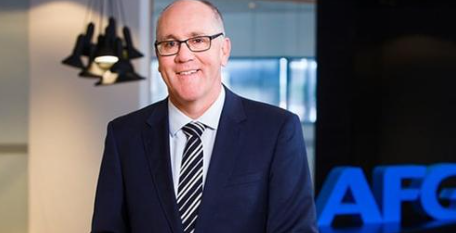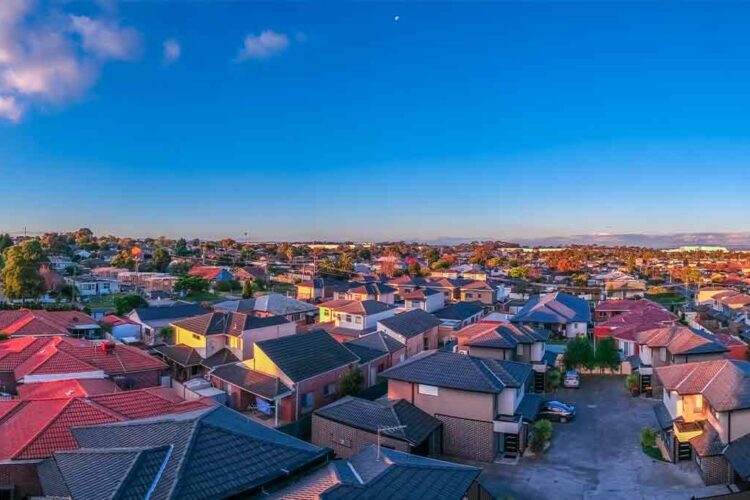Which markets are still reeling and which are rebounding from the downturn? Seven experts from Property Investment Professionals of Australia (PIPA) unpack what’s happening in each state or territory to glean what investors can expect in the coming months.
The latest PIPA National Market Update highlighted here has been more buyers and investors participating in real estate transactions in recent months, indicating that confidence is returning to the property sector.
“Since the start of 2023, there has been more activity from educated buyers and investors who may have realised that waiting it out on the sidelines is not going to improve their portfolios anytime soon,” the report stated.
According to Nicola McDougall, PIPA’s chair, the recent rapid rate rise cycle by the Reserve Bank of Australia (RBA) was likely to have been a shock for many borrowers who have taken out loans during a long period of historically low interest rates.
“The 10 consecutive rises have added an eye-watering 3.5 percentage points to the cash rate, which has pushed interest rates into the 5 to 6 per cent range — a level many borrowers may never have experienced,” she said.
As of writing, the country’s cash rate stands at 3.85 per cent, the highest level since 2012 after the RBA delivered a surprising 25-basis-point rate hike during its latest policy meeting.
However, with surging inflation — which has triggered the central bank to embark on its current monetary policy warpath in May 2022 — appearing to have “peaked”, Ms McDougall commented “there certainly are plenty of signs that we are heading for more positive property conditions in the months ahead.”
But how are each market performing? For a state-by-state play of where markets currently stand and what their future trajectory are, read below:
NSW
Chief executive and founder of Property Buyer, Rich Harvey, said the NSW property market is showing a “mixed bag of results”.
Despite the 10 consecutive rate hikes as of April — which diminished borrowing capacity by an average of 30 per cent — he highlighted dwelling values in most areas only fell by around 12 per cent to 15 per cent.
“The Sydney property market has shown strong resilience and, over the last two months, has shown a significant turnaround,” Mr Harvey said.
The expert cited CoreLogic’s latest data showed the harbour city’s dwelling values rose in February and March by 0.3 per cent and 1.4 per cent, respectively, while compared to 12 months ago, Sydney housing values are now 12.1 per cent lower.
“We have seen a dramatic slowdown in price deceleration, and we have now reached a point of [inflection]. Some say we have reached the bottom of the market, while others say there could [be] a few more per cent to drop.”
As for sales activity, Mr Harvey noted a resurgence in buyer numbers since February, comprising different buyer groups and generally making up the “enthusiastic pool of people searching for property.”
He highlighted the lack of available stock as the main force driving the market, as well as migration and population growth.
With rental prices in the city dramatically increasing due to record-low vacancy rates, Mr Harvey cited several renters are now looking to buy a property to escape the rent rat race.
“I expect rents to rise around another 10 per cent to 12 per cent this year. Increasing yields is also attracting investors back into the market, but only if they can afford a loan as higher interest rates begin to bite,” he said.
As fixed rate mortgages end, the expert also forecasted some home owners may not be able to afford their properties and may be motivated to sell. This could create opportunities for savvy buyers to grow their portfolios in the second half of 2023.
Victoria
Cate Bakos, buyers’ agent at Cate Bakos Property, said the Melbourne market can be described as a “two-speed market” — one that experiences heightened competition on quality properties and languishing listings for compromised listings.
“Buyers remain disinterested in renovation and/or development projects and today’s buyers are applying high scrutiny to each listing in the quest to buy well. However, it’s becoming abundantly clear to these buyers that a low level of listings in the renovated house segment is underpinning the market firmly and contributing to price increases,” she explained.
She noted that there are also two types of buyers in the market: the first group is still waiting for the market to hit its lowest point before making a move, while the second group is still interested in buying despite reduced borrowing capacity.
The city’s rental market saw strong annual growth of 10.1 per cent in the 12 months to February, but the expert highlighted Melbourne’s unit market has “dramatically uplifted” due to a surge in demand — thanks to return-to-office mandates and return in international students.
In terms of price declines, Ms Bakos noted regions of Victoria were performing reasonably in step with its capital city. But unlike Melbourne, regions have maintained strong net gains from the “pandemic rush”.
“While work from home (even in a hybrid capacity) exists, local agents are reporting that those who moved to the regions are still content to stay,” she said.
Queensland
According to Edward Reavy, founder and director of EKR Property, the Queensland housing market is under pressure due to a second wave of interstate migration, which is driven by cost-of-living pressures.
“With recent interest rate hikes, the borrowing capacity of the average buyer has reduced considerably, and the price bracket they could previously afford to buy into is no longer attainable,” he explained.
However, Mr Reavy highlighted buyers in Queensland can purchase relatively better homes in prime locations within their borrowing limits. As a result, this demand is gaining momentum and is expected to drive up housing prices and rental demand in the state.
He noted that demand for property continues to outstrip supply in Queensland, which will help keep house prices in the Sunshine State from “falling off a cliff” and further drive higher rents.
“Some South-East Queenslanders that are retiring or seeking a slower pace of life as the masses move to this region are selling up and moving further north to more affordable and quieter regions,” he said.
Infrastructure development and employment opportunities in towns like Hervey Bay, Bundaberg, Rockhampton, Mackay, Townsville, and Cairns are drawing people to these areas and causing increased demand in respective local housing and rental markets, the expert said.
In conclusion, Mr Reavy said that “the strongest economy in Australia, its affordability and lifestyle, the infrastructure spending, and job opportunities will result in owner-occupiers and investors rushing back to the market” once interest rates stabilise.
South Australia
Peter Koulizos, programs director and master of property at the University of Adelaide, said the local property market “continues to go from strength to strength, relative to the rest of the nation.”
Despite CoreLogic’s data showing a 1.4 per cent decrease in Adelaide’ property prices over the past quarter to February, the expert highlighted property prices in the capital are 5.1 per cent higher today than they were 12 months ago — making it the best annual performer among capital cities.
In addition to the property market’s strong annual performance, he noted the city’s rental market also saw robust growth over the same period. Adelaide recorded a rental growth rate of 12.6 per cent in the last 12 months — the second highest increase in rents, just behind Brisbane’s increase of 13.1 per cent.
The expert attributed Adelaide’s strong property market performance to supply and demand factors, with data from CoreLogic showing a 12 per cent decrease in property listings compared to last year, the largest decline in supply among all capital cities and regional areas in South Australia.
“In relation to the rental market, Adelaide’s vacancy rate is the lowest of all capital cities. A low vacancy rate is a combination of a low supply of rental properties and relatively high demand,” he explained.
But why is there such high demand for rental properties in Adelaide?
Since the onset of the pandemic, Mr Koulizos said demand for rental properties have risen. “South Australia dealt very well with COVID-19, as evidenced by the relatively low number of days the state was in lockdown.
“This caught the attention of others, especially those living in larger capital cities, who decided to move to Adelaide and South Australian regional areas.”
Declaring that “the worst of COVID-19 is now over”, Mr Koulizos said Adelaide is attracting “more than its fair share of overseas migrants and international students” since international borders have reopened, “due to its status as a regional area, which makes it easier for overseas migrants to gain permanent residency, and its affordability relative to other major capital cities.”
Western Australia
Damian Collins, managing director of Momentum Wealth, said Western Australia remained relatively attractive and affordable for home buyers and investors due its low housing prices, strong income, and robust labour market.
He cited the data from CoreLogic which showed that unlike most of Australia, the Perth residential property market has experienced growth, rising 2.4 per cent over the 12 months to February.
The expert also noted the Real Estate Institute of Western Australia’s (REIWA) figures showed that the number of properties listed for sale has remained below 8,000 since the start of 2023 — far below the typical balanced market range of 13,000 to 14,000 listings — while rental listings have dropped from 11,000 in 2016 to being consistently under 2,000 since August 2022. Notably, a balanced market in the state typically sees around 6,000 rental listings.
“The restrictions in the construction market have caused dwelling approvals to fall to the lowest levels in nearly 40 years,” Mr Collins said.
“There is a significant undersupply of residential houses and rentals within the Perth market, which is expected to tighten as supply is unable to keep up with the growing demand of a rising population,” he forecasted.
Tasmania
Despite strong underlying fundamentals and an impressive performance during the first half of 2022, Simon Pressley, head of research at Propertyology, noted that most locations across the state have experienced a slight decline in property values during the fourth quarter.
While the state boasts a strong economic outlook, characterising conditions that typically position the local market for a “spectacular property boom” and strong confidence among real estate buyers, he said the current softening in the market was caused by “buyer fatigue”.
“The state, especially Hobart, has enjoyed one of the longest growth cycles that any Australian city has ever seen. So, it is possible that buyers are now catching their breaths,” he said.
He explained that this softening in values correlated with the start of the interest rate cycle in May 2022.
“During Hobart’s eight-year cycle that produced 130 per cent capital growth, quarterly sales volumes hovered between 750 and 850, whereas Q4 2022 saw a reduction to 690 transactions.
While there is no evidence of distressed sales or excess housing supply as the volume of properties added to the sales market remains at normal levels, he noted the properties listed for sale are taking longer to shift, indicating a slower market.
“The current total volume of resale supply listings is on par with the same time five years ago, when Hobart’s total population was 11 per cent less and its property market was booming,” Mr Pressley said.


